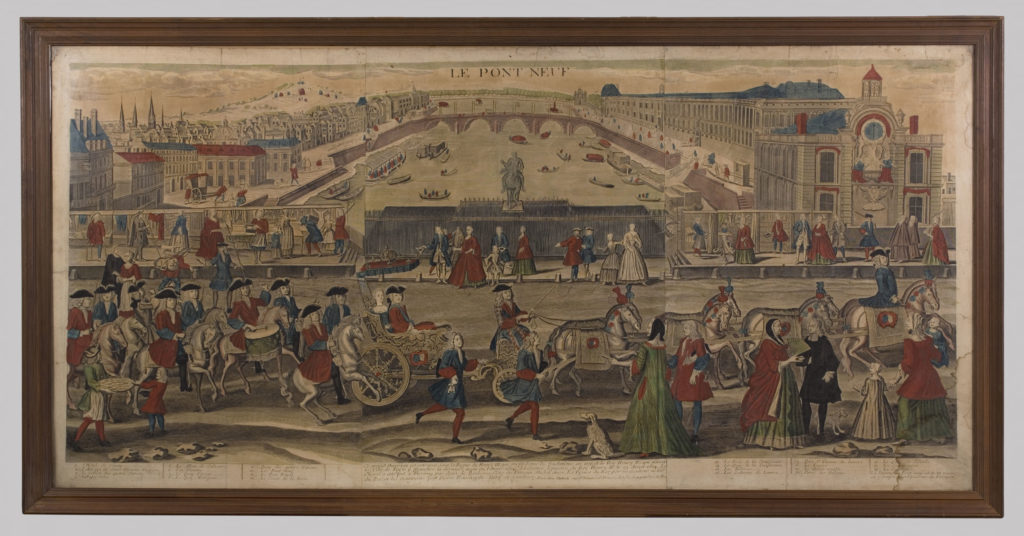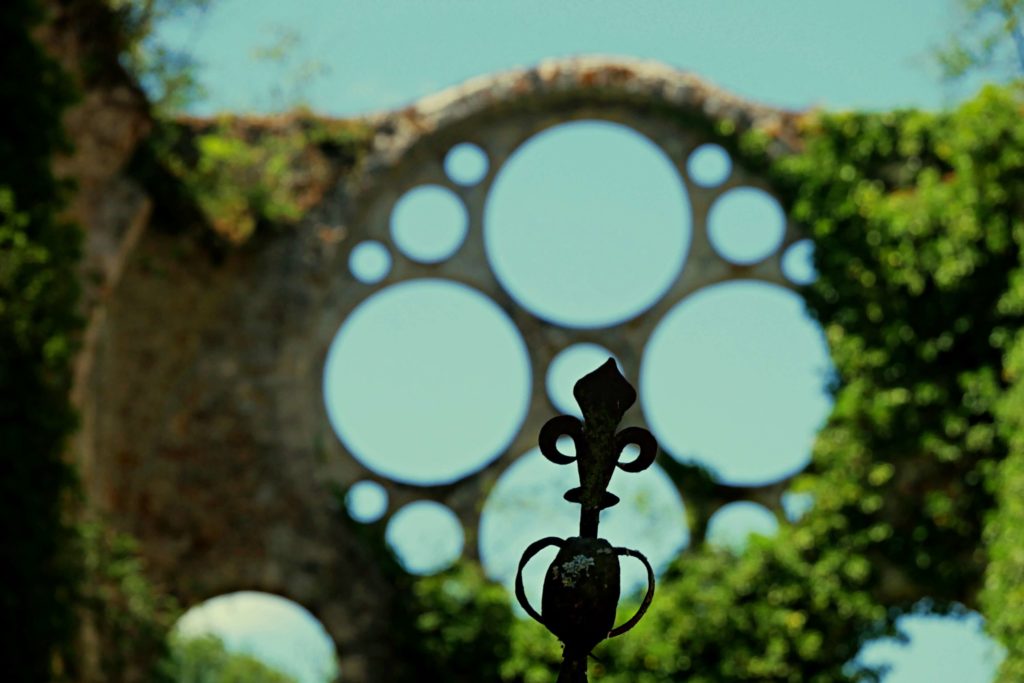From medieval stone crypts to soaring Gothic arches, from carved rose windows to sky-high spires. the cathedrals of France are simply magnificent. There is no other place in the world where the steeples of bell towers dot every corner of the landscape, or as the French saying goes, de clocher en clocher . Every small village has its church, and every region has at least one glorious cathedral rising to the heavens.
Not every large and beautiful church with a flying buttress is a cathedral. Technically, only a church which contains the cathedra, or Bishop’s Chair, can be designated as a cathedral. When Christianity triumphed in France following the defeat of the Romans, each large town had its own Bishop, busy with conversions and baptisms, who needed to have his own chair in the church.
The earliest churches and cathedrals were small and simple, but as the dynasty expanded, so did religion and the need for grandeur. As more nobles, knights and religious dedicated themselves to defending the Christian faith, the Crusades became the centre of medieval life, as to did the worship of relics and belief in miracles. A pilgrimage to Santiago de Compostela in Spain had to be taken on foot by all Christians at least once in their lifetime. As a result, monasteries and cathedrals were built on existing churches along the famous pilgrimage routes.
Cathedrals from the 10th to 12th centuries were generally in the Romanesque style, smooth and rounded with narrow windows, and part of the monasteries to which they were literally attached. The Bourgogne region of France was one of the largest centres of Romanesque architecture. As pilgrimages became increasingly popular, there was a need for larger and lighter religious spaces, and so the vaulted arches, flying buttresses and streaming light of the flamboyant Gothic style was born.
Click here to experience the wonders of the Bourgogne.
From coast to mountain, from champagne to red wine, there are almost 200 exquisite cathedrals to explore. Here is my list of the 10 most beautiful cathedrals in France.
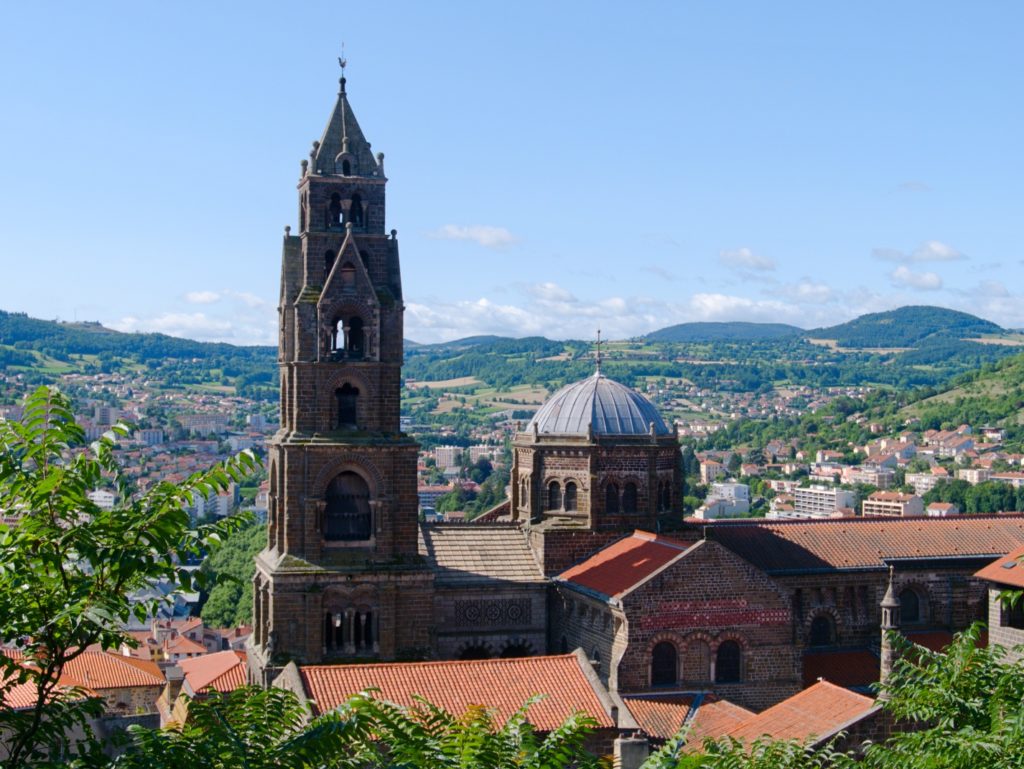
Le-Puy-en-Velay Cathedral
The landscape of Le-Puy-en-Velay, in the magnificent Auvergne region, has been shaped by ancient volcanoes. In the city are several steep volcanic vents, perfect for building shrines which bring one closer to the heavens. The marvellous Le Puy cathedral, dedicated to Our Lady of the Anunciation, sits at the foot of one of these formations, the Rocher Corneille, yet is still one of the highest points of the city. Legends tell of sacred altars in this spot where the Virgin Mary performed miracles, but it is known that this particular spot has been attracting pilgrims and French royalty for over a millennia. The cathedral was constructed in the 12th century with white sandstone and black volcanic rock, in a Romanesque style with Byzantine influences, though it retained traces of architecture dating back to the 5th century.
Archbishop Godescalc is supposed to have been the first to walk from Le Puy to the Santiago de Compostela in 951, thereby creating the well-trodden Chemin du Puy en Velay pilgrimage route. When the pious Louis XI visited in 1476, he stopped around 60 km from the city, removed his shoes and continued all the way to the cathedral barefoot. Now, the cathedral sits high above the old city which grew around it. It is overlooked by the colossal statue of Notre-Dame made from melted Russian guns and presented to the city in 1860. The cathedral today is still filled with wandering pilgrims carrying heavy backpacks, starting (or finishing) their journey to Spain.
Vézelay Abbey
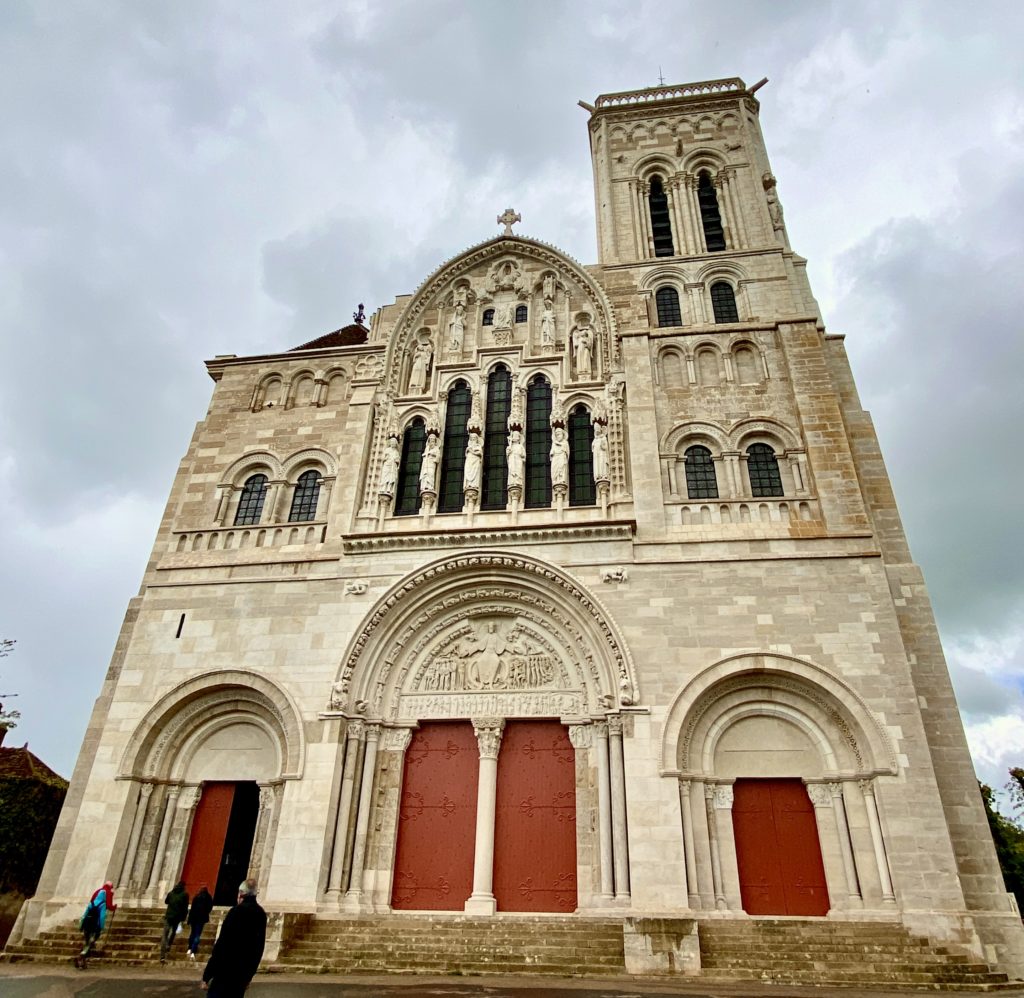

Sainte-Marie-Madeleine de Vézelay , in the rich wine-making Bourgogne, or Burgundy region, is a masterpiece of Romanesque architecture. When the bones of Mary Magdalene were bought from the Holy Land to the Benedictine monastery there in 860, pilgrims flocked, and even more arrived 200 years later when the Pope declared the relics to be authentic. Former slaves bought their metal chains to the cathedral as penitence, and in the 11th century the iron was melted down to construct a railing around the Mary Magdalene relics. Vézelay became an important abbey and cathedral, a starting point on the pilgrims’ route to Spain, known in France as pèlerinage de Saint-Jacques-de-Compostelle . In 1120 a disastrous fire caused much damage and killed over 1000 pilgrims. The current building dates to between 1120 and 1150, though suffered some destruction and neglect over the past millennium. The striking tympanum above the central door is probably the finest Romanesque stone carving in France depicting Christ and the Apostles.
Sens Cathedral


There’s something rather lopsided about the Sens Cathedral. Looking a little like a bunny who has lost an ear, there is only one tower. However, this only adds to the beauty of this Burgundian cathedral, which was the very first to be built in the Gothic architectural style, beginning around 1130. Its high rib vaults over the entire structure were the first of its kind in the world. Due to its high status and wealthy surroundings, the cathedral of Sens was much visited by all manner of kings, queens and popes, as well as Thomas Beckett, Archbishop of Canterbury, who sought sanctuary there for several years before returning to England (he probably shouldn’t have gone back…). There were once two full towers rising from the front of the cathedral, the North and the South. The South Tower is around 800 years old, and today, takes in the pretty views of Sens from its Renaissance bell tower. The North Tower, alas, once covered in a lead bell tower, was taken down in 1848 and never restored.
Bourges Cathedral


Did you know one of the towers of the Cathedral of Saint-Etienne in Bourges is called the Butter Tower? Bourges, almost in the exact centre of France, was one of the earliest Christian cities. Its stunning cathedral was built between 1195 and 1250 as Gothic architecture was taking hold of church building, and was dedicated to Saint Etienne, the first Christian martyr. The cathedral is a a structural masterpiece with its simple and harmonious design, a basilica with five naves and chapels surrounding the choir, filled with light. The vivid stained glass windows date to the twelfth century, a treasure trove of historical and religious images. On the facade over the main entrance is one of the best examples of 13th century sculpture, depicting religious scenes such as the Last Judgement. And the Butter Tower? During Lent, Christians were not allowed to eat any dairy products. But after the collapse of the North Tower of the Bourges Cathedral in 1506, special permission was granted to eat butter during the 40 days before Easter for those who would donate to the rebuilding fund. Ever since, the tower has been referred to as la Tour de beurre.
chartres Cathedral
The Cathedral Notre-Dame de Chartres has long been the centre of the cult of the Virgin Mary. For many years it has been in possession of a miraculous statue in her image as well as a sacred tunic, the Sancta Camisa, Mary was supposed to have worn at the birth of Jesus. By the time the cathedral was completed, around 1220, Chartres had become one of the most important pilgrimage sites in France. The cathedral itself, one of the first to use flying buttresses, is referred to by UNESCO as the ‘high point of French Gothic art”. There are 173 vibrant stained glass windows, from the 12th to early 13th centuries. The outside facade is akin to an oversized illustrated bible, with its intricately carved statues depicting stories from the Old Testament and the Apostles. Angels, chimeras and gargoyles also appear on the outside, as a warning to the devoted.


Inside is one of the most well known church labyrinths, created around 1215. It is a simple design, with a rosette in the centre supposed to illustrate the nature of God. Filling the entire width of the nave, it was an important part of the pilgrimage path. Whether pilgrims traversed the labyrinth on their knees, as they supposedly did at other churches is not known, as there is no historical proof of this practice at Chartres. The cathedral had a lucky escape in 1944 when the Americans, believing its towers to be occupied by the Germans as an artillery base, ordered it to be destroyed. Luckily, the Germans were not in Chartres and the cathedral dedicated to Notre-Dame was saved.
Just what is a flying buttress?
amiens Cathedral

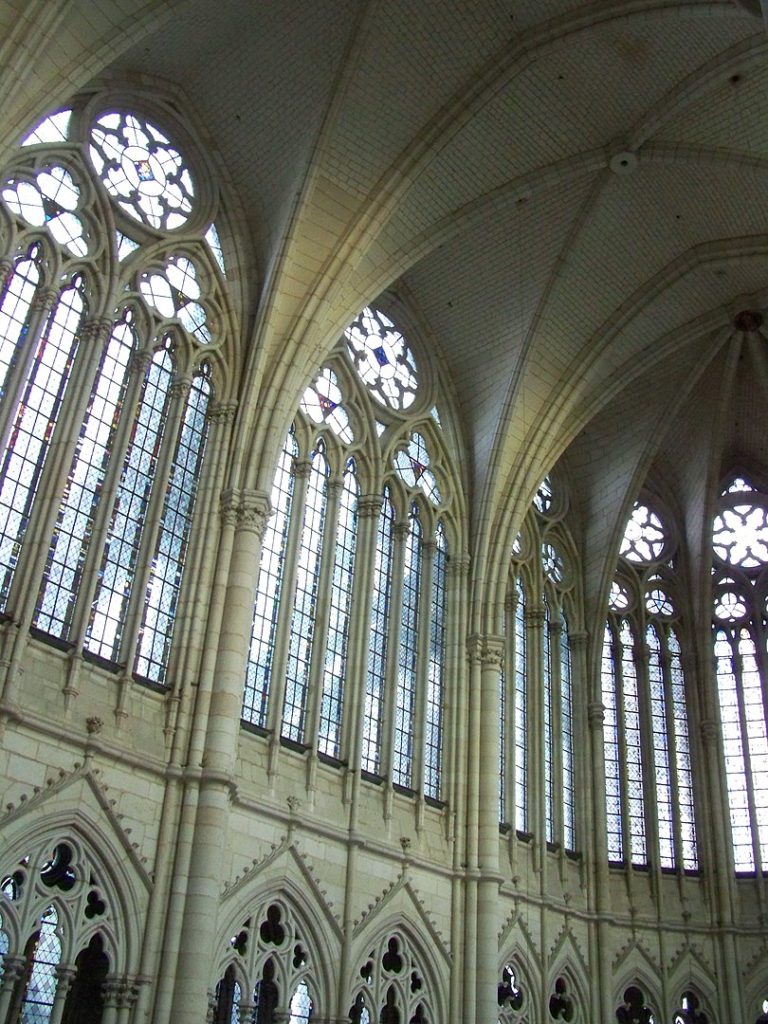
On entering the cathedral of Amiens, in Picardy, what strikes you is the clarity and the purity of the light. At first you think you have found God himself, but a glance towards the heavens is enough to show that it’s the absence of colour in the medieval windows, and not a religious conversion. Though it is the largest of all the beautiful cathedrals in France, with perfectly proportioned windows, much of its stained glass has been lost to history through fire, hurricanes, war and human error. This in no way detracts from its beauty.
So daring is the elevation of both the nave and the choir that the inside looks like a cage of glass sustained by slender threads of stone.
In 1206 the purported head of John the Baptist, treasure obtained during the Crusades in Constantinople, was bought to Amiens. Such a head needed a sumptuous resting place, and so plans were immediately made to build the cathedral. Built between 1220 and 1270, its cream coloured rib vaults reach to the sky, and its spectacular choir screen shows the life of founder St Fermin and John the Baptist. Pilgrims came to droves to see the head encased in its gold reliquary chest. Unfortunately the head was lost or destroyed during the French Revolution, though a replica was produced and is on display in the treasury of the cathedral.
reims Cathedral


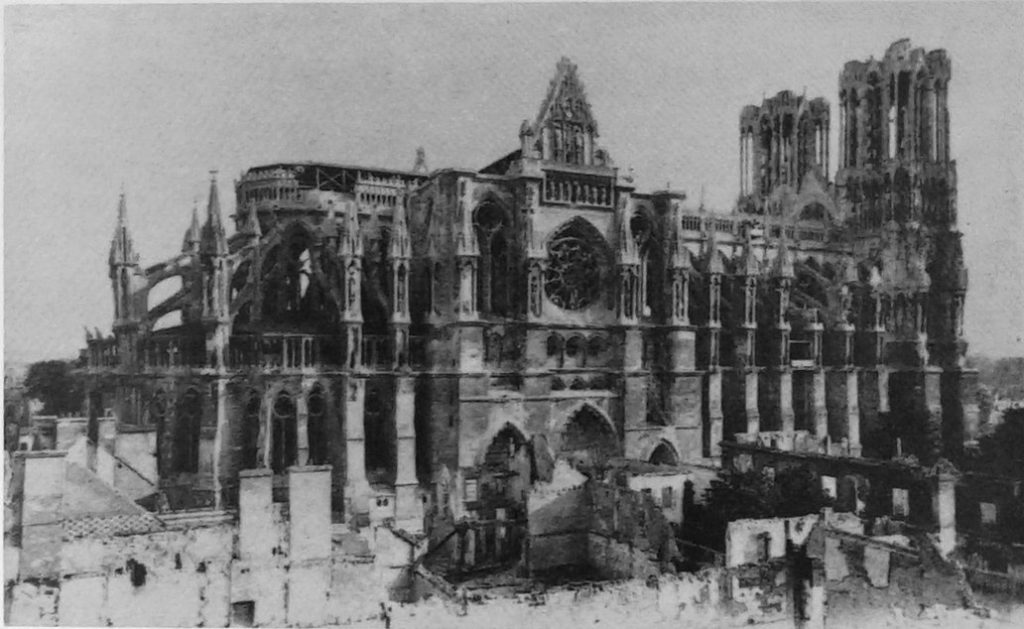
If you’re not French, I’ll tell you that pronouncing ‘Reims’ is not easy. I still can’t say it properly. But the cathedral in Reims, dedicated to Notre-Dame (Our Lady), is perfectly French in its harmony and grace. The King of the Franks, Clovis I, was baptised there around 496 in an earlier church, and from the 11th century under its vaulted arches French kings have been crowned and anointed with the Holy Ampulla, a sacred glass vial filled with myrrh. Henri I was the first in 1027, and in 1825, Charles X was the last. There have been a number of churches and cathedrals on the same spot, but the building today dates mostly to the end of the 13th century. Joan of Arc is immortalised with several statues at the cathedral, for her role in re-taking the city of Reims from the English in 1429, which allowed Charles VII to be crowned king in the cathedral. During WWI, heavy German shelling caused the roof to collapse completely, causing extensive damage. Thankfully, the ruined cathedral was restored by 1938.
rouen Cathedral
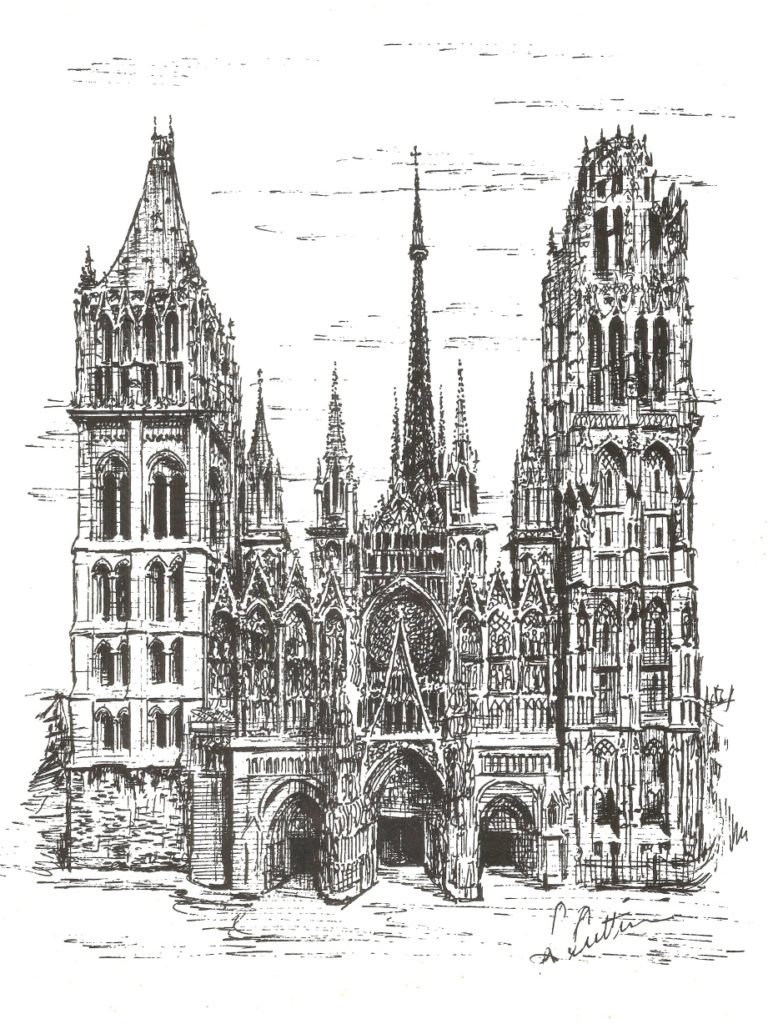
When you first glance at the lofty towers of the Cathedral of Rouen, there’s the sense that something is not quite right. And then you’ve got it – there are three, and they are not at all the same. The cathedral of Notre-Dame, dedicated to the Virgin Mary, is almost a work in progress; it has been built and rebuilt countless times over millenia. William the Conqueror, a son of Rouen, was there when the original Romanesque cathedral was sanctified.
Rouen was a wealthy town and inspired by the already completed cathedral of Amiens, a Gothic renovation was begun in 1145, starting with the new Tower Saint-Romaine. By the time the second tower was begun, so had the Renaissance, and so the design was Flamboyant rather than strictly Gothic. The third tower, or more specifically the steeple which rises majestically from the roof, was only completed in 1882, and for a short time its height of 151 metres made it the tallest building in the world (Not long afterwards the Eiffel Tower would be the world’s tallest building for many years).
In 1944, as the Allied forces bombarded Normandy just before the D-Day invasion, the cathedral suffered several direct hits. It was not until 2016 that the restoration of one of the most beautiful cathedrals in France was finished.
Metz Cathedral
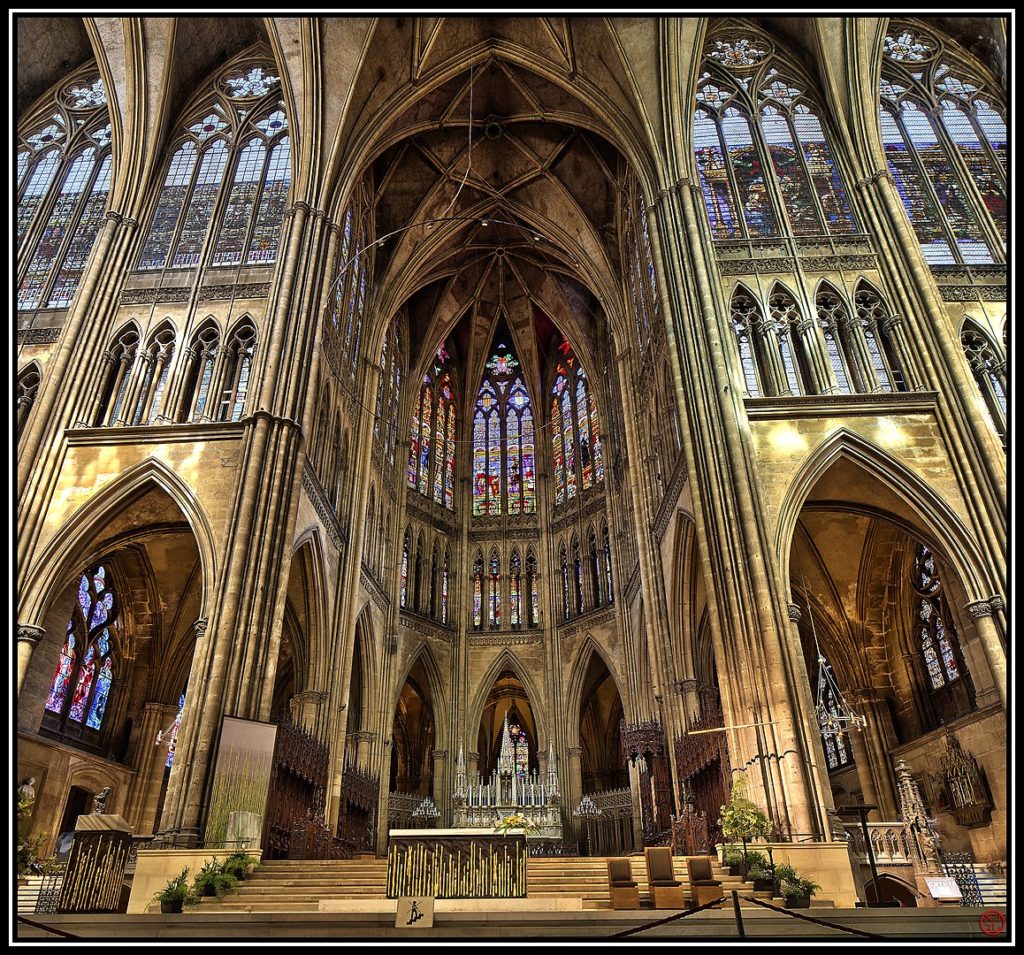
The stained glass is exhilarating, it needs gravity, passion. It must live through the light perceived.
Marc Chagall
If you love gazing at the sunlight streaming through gorgeously coloured stained glass windows, then a visit to Metz Cathedral in Lorraine, north east of France, is a must. Given the nickname “The Good Lord’s Lantern”, the cathedral boasts of around 6,500 sqm of stained glass, the most of any medieval monument in the world. The earliest of the brilliant coloured glass, thick and mosaic-like, dates to the 13th century and depicts the lives of Jesus, Mary and the Apostles. As you follow the chronology of the stained glass, the colours are brighter, the glass thinner, and the images are pieces of Renaissance art. Stained glass windows were even added in the 20th century, where well known French artists were commissioned to create modern artworks. The pieces by Marc Chagall, illustrating scenes from the Old Testament, are beautiful in their simplicity.
Saint Michel d’Aiguilhe

Finally, this is not at all a cathedral, but one of the most picturesque chapels in France. Balanced on the very top of an ancient volcanic vent in the medieval city of Le-Puy-en-Velay, is the chapel Saint Michel d’Aiguilhe, or Saint-Michael of the Needle, consecrated in 961. There are 268 stone steps carved into the rock to reach the top. According to legend, the Archbishop Godescalc commissioned the chapel on his return from the long walk from Spain. The chapel was expanded over the centuries but today, you follow the same steep steps and sit in tranquility amongst the same painted murals and primitive arches as a 10th century pilgrim.
Related post – Top 5 Historical Places in France – Strasbourg Cathedral
Explore the most beautiful cathedral of all in France, Mont Saint Michel.
Which do you think is the most beautiful cathedral in France? Tell me in the comments below!

